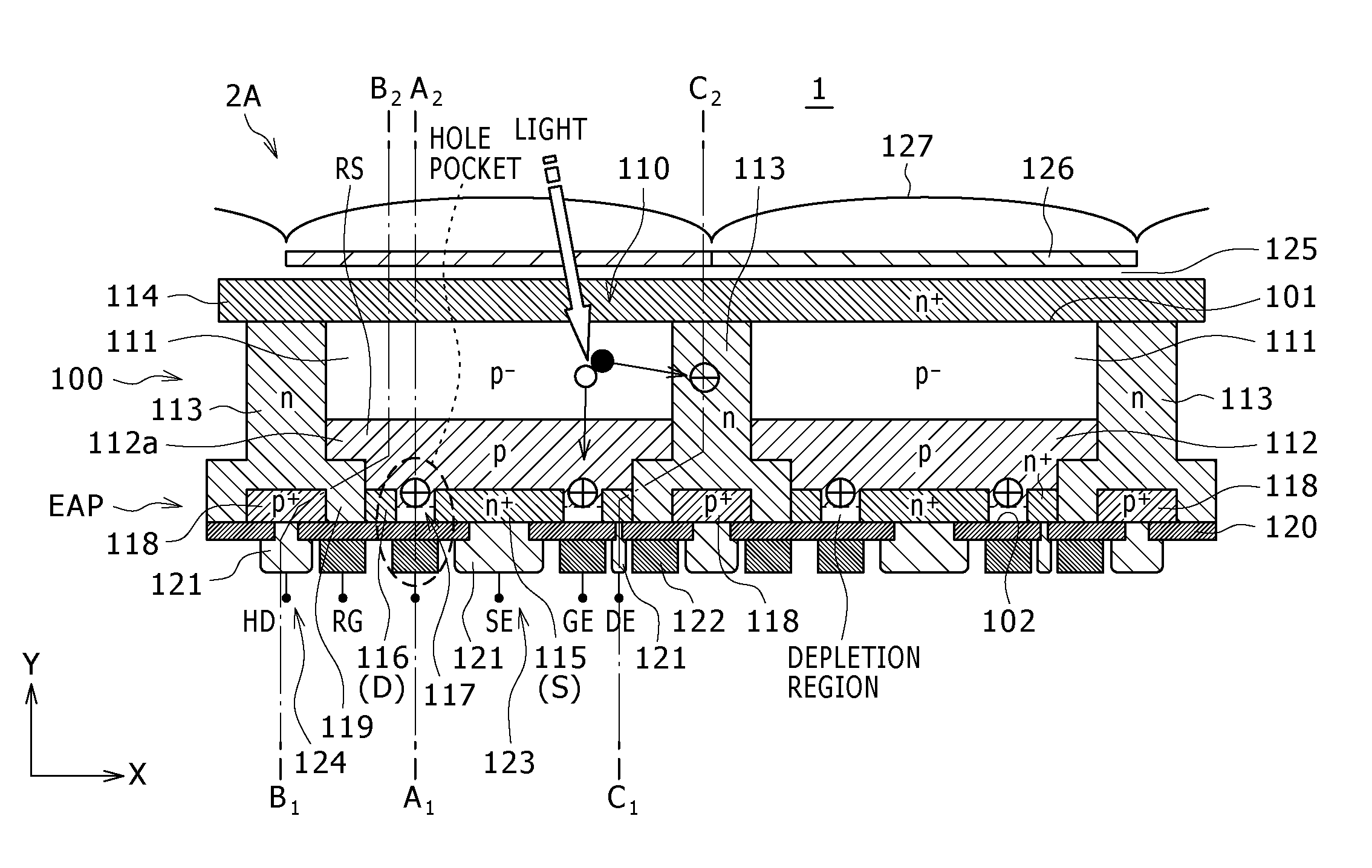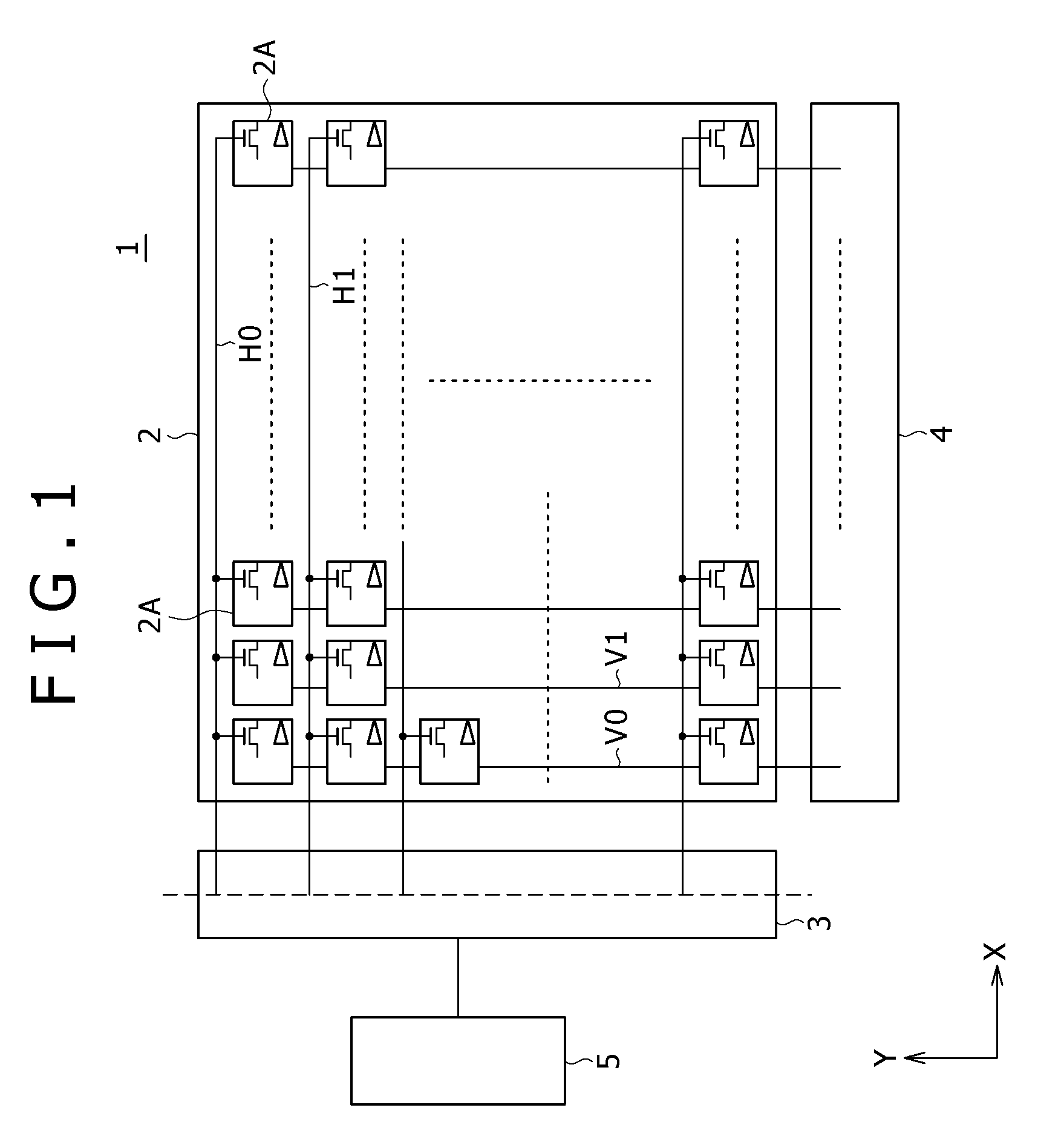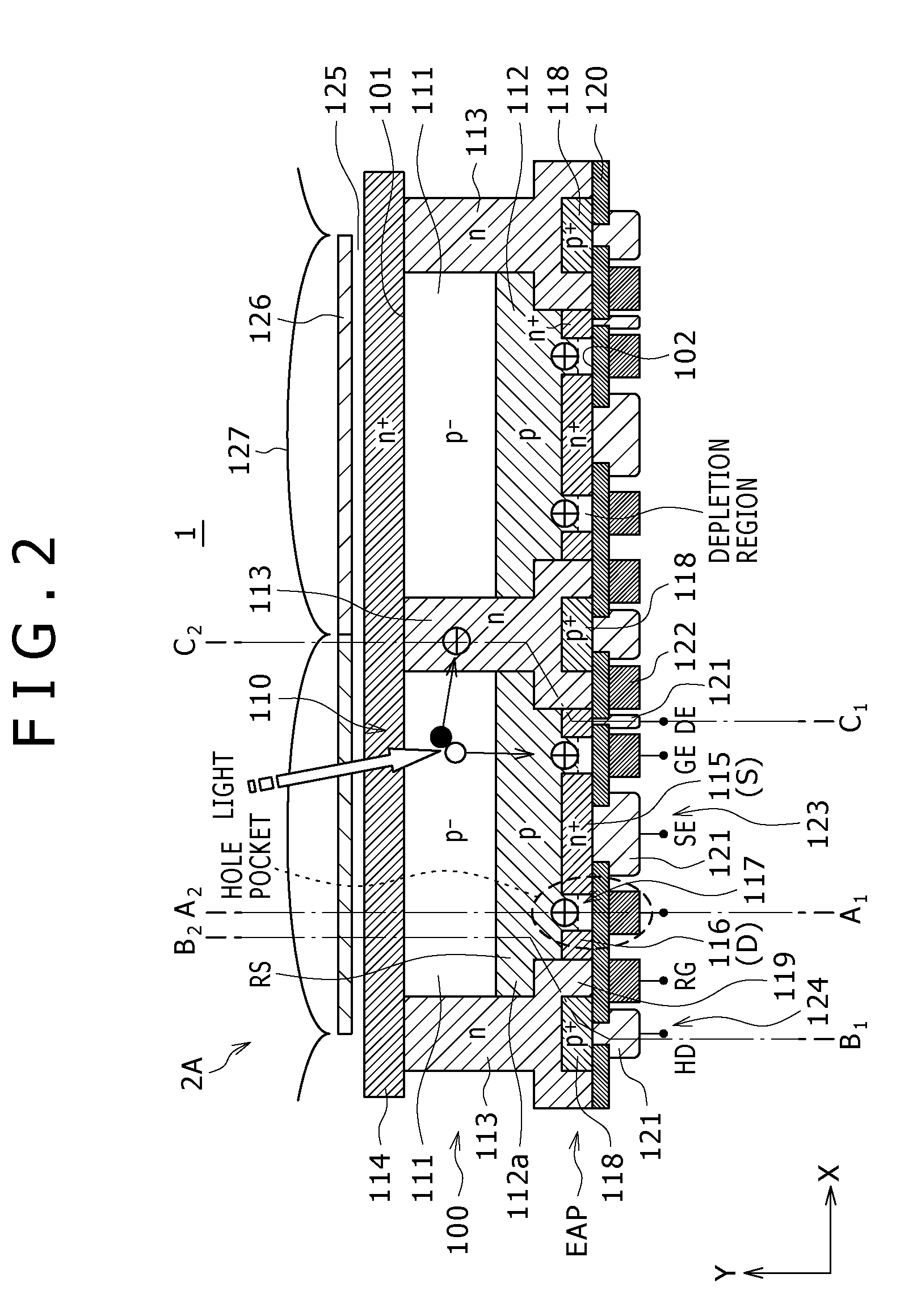Solid-state imaging device and camera
a solid-state imaging and camera technology, applied in the field of solid-state imaging devices, can solve the problems of low aperture ratio, high reset voltage, and inability to irradiate the backside, and achieve the effects of enhancing sensitivity, reducing reading ability, and increasing distan
- Summary
- Abstract
- Description
- Claims
- Application Information
AI Technical Summary
Benefits of technology
Problems solved by technology
Method used
Image
Examples
first embodiment
[0053]FIG. 1 is a schematic diagram showing the configuration of a solid-state imaging device according to a first embodiment of the present invention.
[0054]A solid-state imaging device 1 shown in FIG. 1 includes a pixel part 2 as a sensing part, a column-direction (Y-direction) control circuit 3, a row-direction (X-direction) control circuit 4, and a timing control circuit 5.
[0055]The pixel part 2 is formed by arranging pixels 2A each including a light-receiving part, a reset transistor, and so on in a matrix (on rows and columns) as described in detail later.
[0056]The pixel part 2 of the present embodiment is formed as a back-irradiation lateral-overflow image sensor based on a charge modulation system. Each pixel 2A in the present embodiment has a floating cell structure.
[0057]In the pixel part 2, the pixels arranged on the same column are connected to a common column line H0, H1, . . . , and the pixels arranged on the same row are connected to a common row line V0, V1, . . . .
[0...
PUM
 Login to View More
Login to View More Abstract
Description
Claims
Application Information
 Login to View More
Login to View More - R&D
- Intellectual Property
- Life Sciences
- Materials
- Tech Scout
- Unparalleled Data Quality
- Higher Quality Content
- 60% Fewer Hallucinations
Browse by: Latest US Patents, China's latest patents, Technical Efficacy Thesaurus, Application Domain, Technology Topic, Popular Technical Reports.
© 2025 PatSnap. All rights reserved.Legal|Privacy policy|Modern Slavery Act Transparency Statement|Sitemap|About US| Contact US: help@patsnap.com



